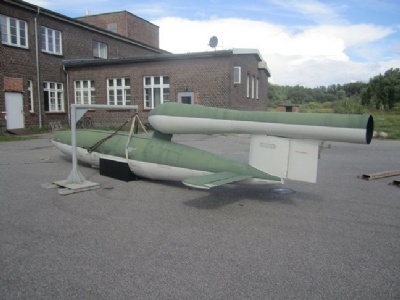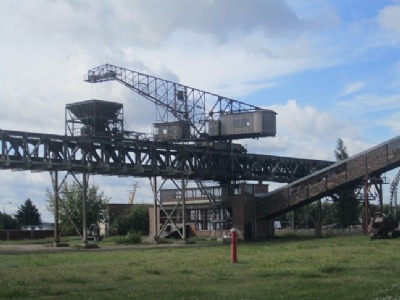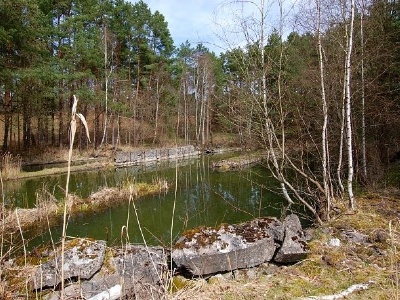Peenemünde
In 1934, rocket engineer Wernher von Braun began to experiment with rockets at the test facility in Kummersdorf. The test shooting of two rockets was successful, which made the Nazis realize the potential of rockets and hired von Braun. The test facility at Kummersdorf turned out to be to small and the facility was moved to an isolated part in the current northeastern Germany called Peenemünde. The facility was under the army’s control, but a collaboration to produce a rocket for military purposes was initiated together with Luftwaffe.
Peenemünde was divided into two zones, Ost and West. At Ost, the research and production was located and at West, also called Prufstand VII about 4 – 5 kilometers northeast of Ost, test shootings were carried out. In October 1942, the first test-firing of a V2 rocket was carried out, which at a speed of mach 5 reached an altitude of 8450 kilometers and flew, during the 296-second flight, a distance of 190 kilometers. This was the prototype of what is now called ballistic missiles and also the embryo of the space programs that began two decades later. For the construction of the facilities the germans used slave workers. These were housed in two nearby labor camps, Karlshagen I and II.
But the top-secret facility had of course not gone unnoticed by the British and already in May 1942 they knew its location, but not necessary knowing what was going on there. It was only in April 1943 that the British understood what was going on in Peenemunde. The British then decided to bomb the facilities to thwart the Germans’ attempts to produce V2 rockets. On the night of August 17 to 18, 1943, the British performed Operation Hydra. In three airraids the facility was subjected to such destruction that the Germans realized that it was useless to rebuild it because it would still be bombed over and over again.
Instead, the Germans moved the production to Nordhausen in Thüringia. There were existing spaces interspersed in the Harz Mountains, which thus came to serve as a natural protection against similar attacks. The technical development and design was moved to a mountain facility on Lake Trausee, Austria, where slave workers from Ebensse were used. The test shooting itself was moved to a military training area called Blizna in southern Poland. The V2 rocket began to be used against enemy targets on September 8, 1944, when Paris was attacked. This attack was followed by a further 3,000 (most of them against Britain) which killed a total of about 9,000 people. But the V2 rocket never became the miracle weapon or retaliatory weapon that the Nazi propaganda presented it to be. And it definetely had no impact whatsoever on the war itself.
Current status: Partly preserved/demolished with museum (2013).
Address: Im Kraftwerk, 17449 Peenemünde.
Get there: Car.
Follow up in books: Kennedy, Gregory P: Germany´s V-2 Rocket (2006).








The buildings where the rocket production and research was conducted are today an extensive and interesting museum that also includes the power station that was built in the early fourties. The test facility, on the other hand, is destroyed and there is only some debris and ruins to see, it is also within a closed area and can only be visited in the company of a guide.
In June 1944, a V2 rocket crashed outside the village of Bäckebo in the county of Småland, Sweden. Not that the Germans suddenly attacked Sweden, but the rocket had simply come out of course and exploded at an altitude of 1000 meters. Debris was spread over a large area but was quickly collected and sent to Stockholm for analysis. In addition to this rocket, six V1 rockets crashed over southeastern Sweden between November 1943 and November 1944.
The Germans were far ahead when it came to rocket science but never reached its full potential. Frankly, they weren’t even close to develope something that could have turned the tide of war, but they were on something and the allied knew that very well. For the allies, it was important to seize the researchers after the war. The United States staged an entire operation called Paperclip to recruit German scientists and allow them to continue their research in the United States. The most well known was of course Wernher von Braun, who became a prominent figure in the American space program. That von Braun during his time as a German rocket scientist had used slave workers was nothing that the Americans considered worth highlighting, let alone let von Braun be held accountable.